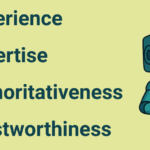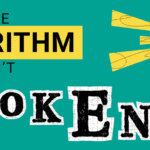
The rise of AI tools has changed the way we create content—but it’s also sparked new questions about SEO.
If you’re wondering whether AI-written content will hurt your Google rankings, you’re not alone.
The truth is, it’s not about who (or what) writes your content—it’s about how helpful, original, and trustworthy it is.
What Google Says About AI Content
So, where does Google stand on all this?
Google’s official stance is simple: they reward high-quality content—regardless of how it’s produced.
They penalize spammy, low-quality content, not AI itself.
For years, Google has been refining systems like the Helpful Content System to better understand and promote content made for people, by experts. Whether the content was created by a human, an AI, or a combination of both is irrelevant. If the final product is original, helpful, and demonstrates real expertise (E-E-A-T), it can achieve a higher ranking.
The focus is on the quality of the content, not its origin.
Put simply: if it’s useful, it ranks. If it’s spam, it sinks.
The Right Way vs. The Wrong Way to Use AI for SEO
The difference between AI that supports SEO and AI that hurts SEO comes down to how much human expertise shapes the final product.
|
✅ The Right Way
|
❌ The Wrong Way
|
|
Brainstorm keywords & topics
|
Publishing without editing/fact-checking
|
|
Generate outlines for structured posts
|
Dozens of near-duplicate posts (thin content)
|
|
Summarize long research for insights
|
Keyword stuffing & unnatural phrasing
|
|
Rephrase sentences for clarity & tone
|
Relying on AI “expertise” with no human review
|
When used correctly, AI accelerates research and drafting — while humans steer the strategy, expertise, and brand voice.
Used incorrectly, AI creates SEO red flags. Google’s systems, like the Helpful Content System and SpamBrain, are designed to detect patterns of low-quality or manipulative content. That means AI spam can result in:
- Lower rankings (content gets buried below higher-quality competitors)
- Wasted crawl budget (Googlebot spends time crawling unhelpful pages instead of your valuable ones)
- Trust signals lost (users bounce quickly, hurting engagement metrics like dwell time)
In plain terms: letting AI publish unchecked content might feel efficient today, but it can quietly damage your rankings and your reputation tomorrow.
How to Use AI and Still Rank on Google: A Quick Checklist
If you’re going to use AI in your content strategy, follow these steps to stay aligned with Google’s rules and your audience’s trust:
- Start with Human Strategy – Define your topic, audience, and goals before touching AI.
- Use AI for Speed, Not Substance – Let it handle outlines, drafts, or summaries, but keep the insights human.
- Fact-Check Everything – Verify stats, claims, and examples before publishing.
- Inject Your Expertise – Add personal experiences, case studies, or brand stories that AI can’t replicate.
- Edit for Voice & Tone – Ensure the final piece sounds like you and reflects your brand’s personality.
Following this process ensures your content is compliant with Google’s guidelines, protects your brand, and keeps your readers engaged.
Our Final Thoughts
Focus on creating value for your readers with integrity and expertise, and you’ll be aligned with the rules of any search engine, now and in the future. At the end of the day, SEO isn’t about chasing algorithms—it’s about earning trust. And trust comes from people—your expertise, your stories, and your perspective.





